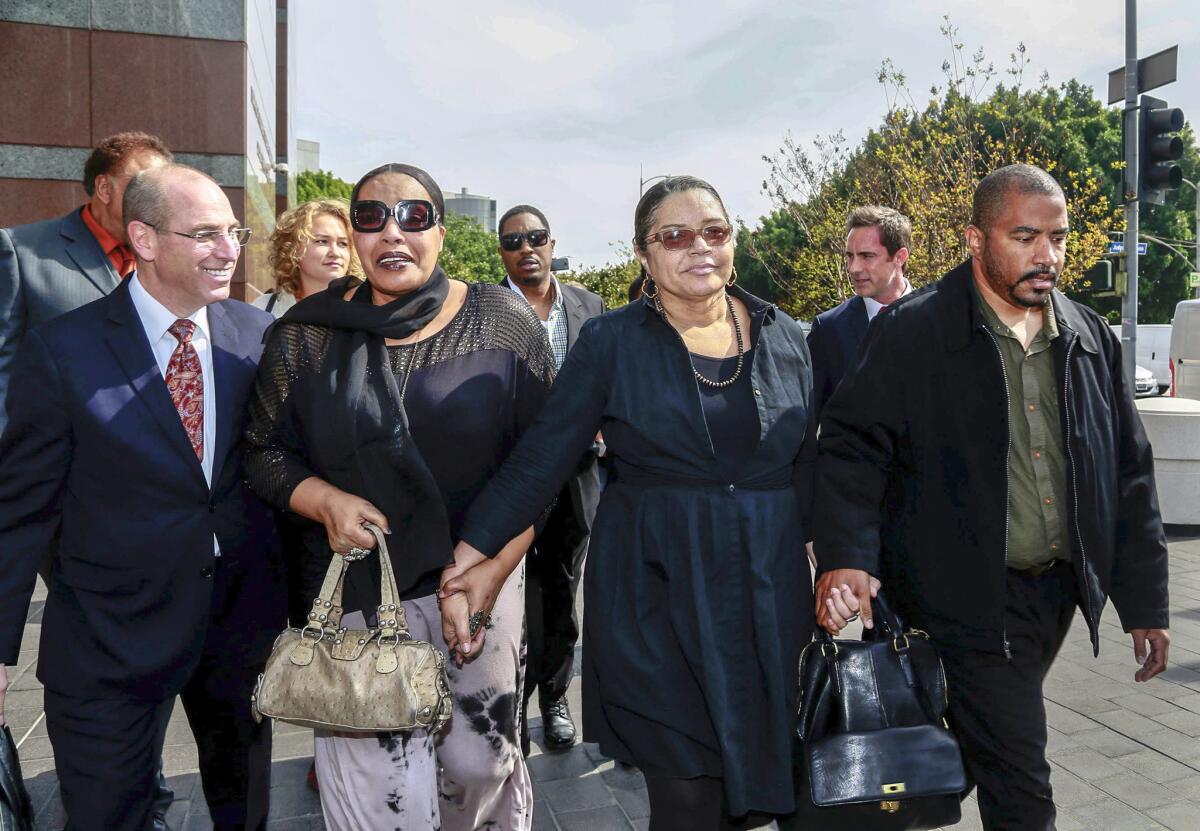Editorial: ‘Blurred Lines’: How many tunes are ‘blurred’?

- Share via
Have a hit, get a writ.
That music-industry axiom is one way to understand the legal battle between Marvin Gaye’s heirs and two recent chart-toppers, Robin Thicke and Pharrell Williams. The Gaye family accused Thicke and Williams of plagiarizing one of Gaye’s best known compositions, “Got to Give It Up,” when they wrote the smash “Blurred Lines” in 2013. On Tuesday a federal jury agreed, awarding Gaye’s heirs nearly 70% of the $10.8 million that Thicke and Williams have made on the song.
Thicke and Williams have said that they just wanted to capture the feel of Gaye’s tune, and it’s a tribute to Williams’ skills as a producer — and to studio gear that can replicate the sounds of other recordings and bygone eras — that they did it so convincingly. Yet throughout history, artists in all media have drawn on others’ works for inspiration and influence. The Songs That Sound Like Other Songs website lists scores of examples, both serious and fanciful, just in the field of contemporary pop music.
What makes “Blurred Lines” different? For starters, it was the top-selling song of 2013, so it presented a fruitful target for litigation. That’s not to say the eight-person jury was irrational when it found that Thicke and Williams infringed on Gaye’s work (a third writer credited on “Blurred Lines,” the rapper T.I., was not held liable for his contribution). Anyone who’s heard both tracks immediately notices the striking similarity. That similarity, however, is more in the bouncy feel of the songs than in the actual notes being played or the words being sung.
That’s the troubling aspect of this case, because it tells songwriters that they evoke their influences at their peril. This is not a new caution; other songwriters have lost cases because they re-created a vibe too faithfully. But the creative process is by its nature reflexive and accretive, as artists absorb what their predecessors have done and try to add meaningfully to it. The key word there is “add”; it’s what separates creativity from parasitism. But the line between the two is, shall we say, blurry. Comparing some of his most famous works with the folk songs he spent years singing, Bob Dylan said recently, “All these songs are connected. Don’t be fooled. I just opened up a different door in a different kind of way.”
Copyright infringement claims are judged case by case, with the jury or judge making a decision on similarity that’s at least partly subjective. That’s why what the “Blurred Lines” jurors decided won’t necessarily spill over into other claims against other songs. Nevertheless, the Gayes’ win would be a loss for music if artists stopped listening to and learning from one another for fear of having their next hit turn into their next court date.
Follow the Opinion section on Twitter @latimesopinion and Facebook
More to Read
A cure for the common opinion
Get thought-provoking perspectives with our weekly newsletter.
You may occasionally receive promotional content from the Los Angeles Times.






